The Most Popular Sea Creature in Cartography
The ominous octopus is a key figure on many propaganda maps.
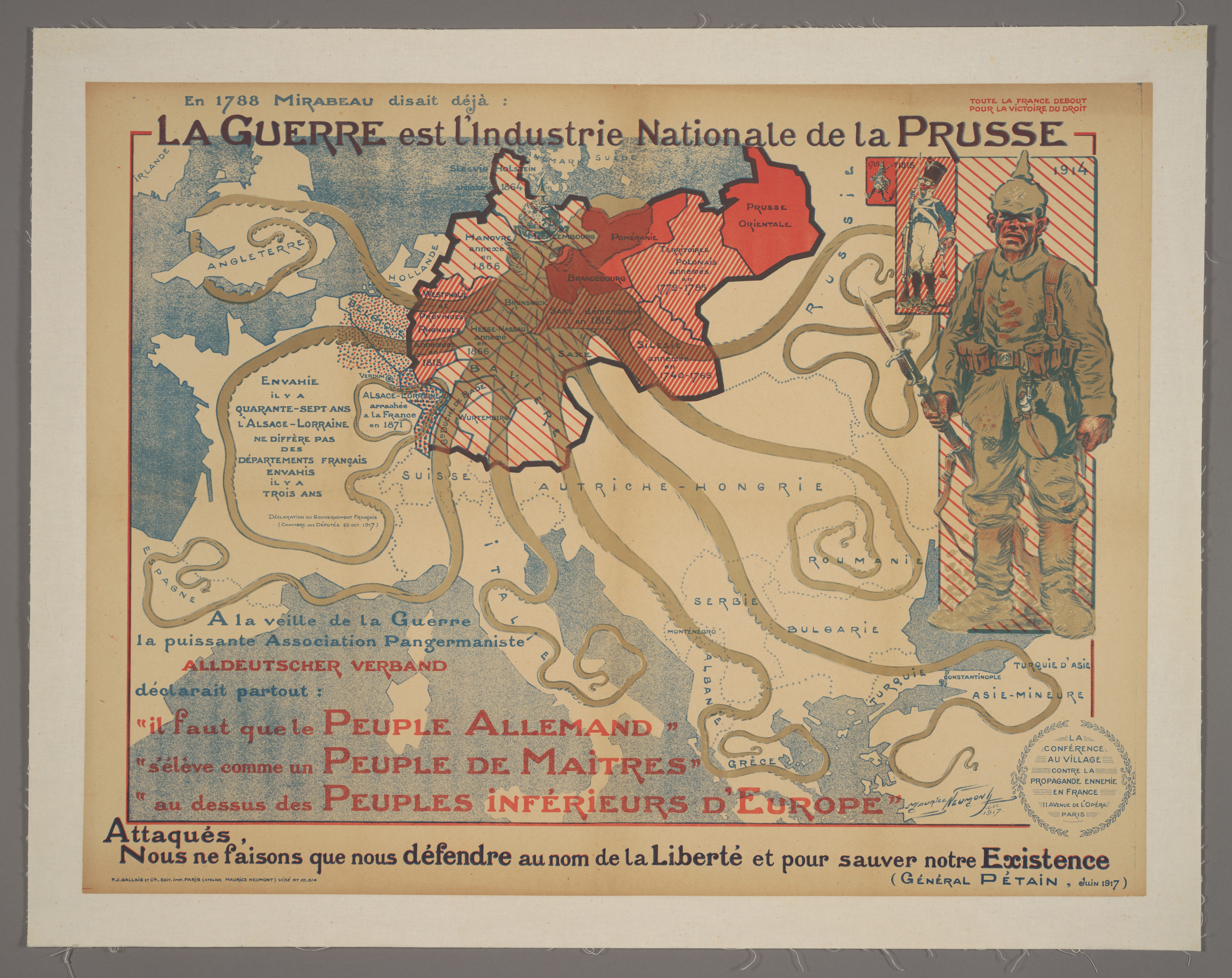
A sea creature as a cartography tool. [Photo: PJ Mode Collection at Cornell’s Digital Library/CC BY-SA 3.0]

Many animals have been used in cartography to represent countries or landmarks, but one in particular has developed a stranglehold: the menacing, tentacled octopus.
“I can’t think of a good octopus,” says PJ Mode, the collector of over 800 persuasive maps that are in the process of being digitized at Cornell University Library. “It’s a great symbol of grasping, overreach, and evil.”
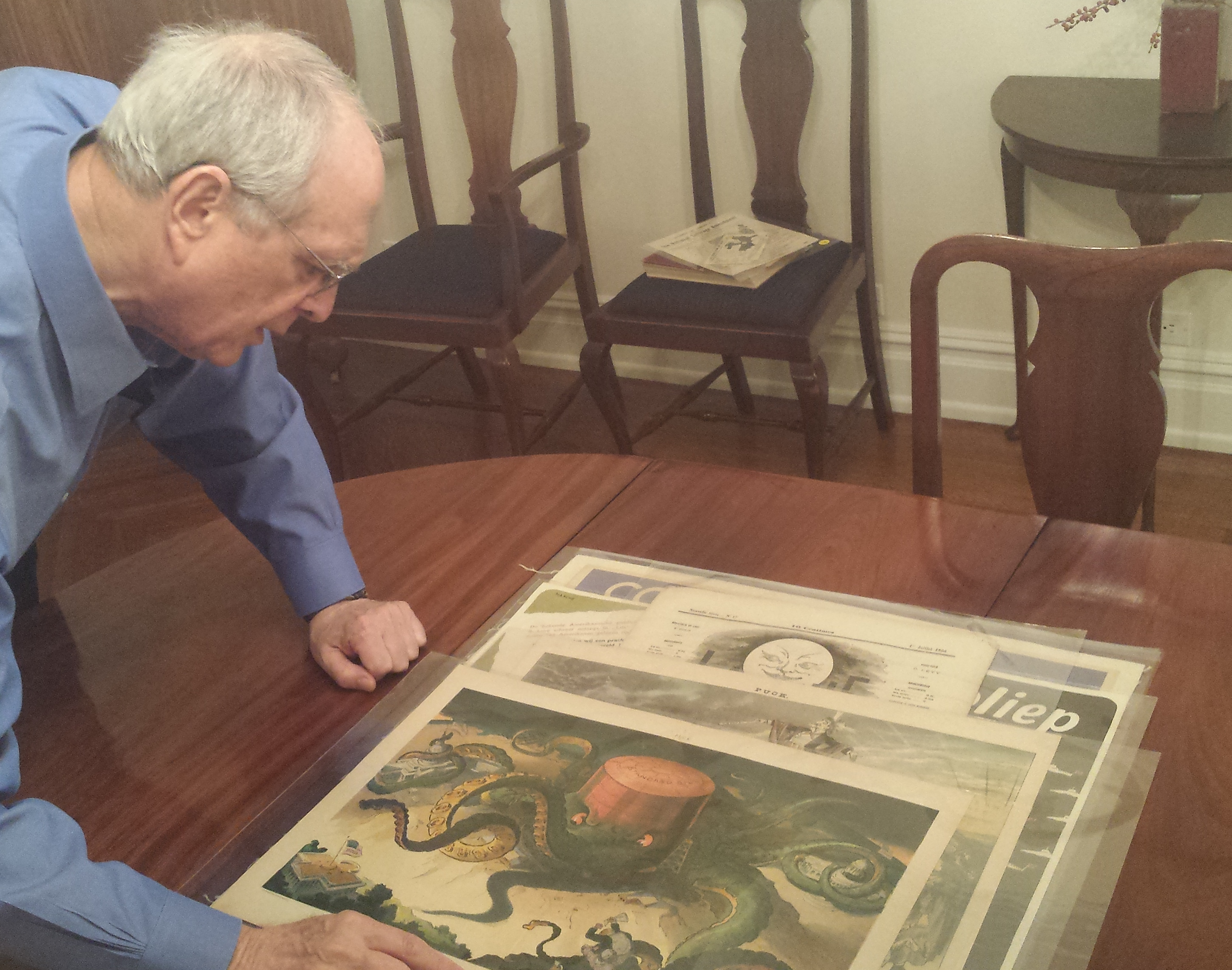
The image of the octopus is prolific in persuasive cartography—maps that are primarily intended to influence opinion or beliefs rather than communicate objective geographic information, Mode defines. In these maps, cartographers use the octopus as a symbol of power and oppression, often showing its tentacles unfurling around the globe. “Such symbols have a high emotional impact and convey their meaning at a glance,” Judith Tyner, a geography professor at California State University, Long Beach wrote in the Journal of Geography.
The first traceable use of octopuses in cartography was in 1877 by British map artist Fred W. Rose. He illustrated a war map that depicted Russia as an enormous, grey octopus, alluding to the country’s territorialism. Ever since, cartographers have continued to use the octopus to send messages about political agendas from expansionism to Communism.
Here are four maps from Mode’s persuasive map collection that put the octopus to use.
A Humorous Diplomatic Atlas of Europe and Asia
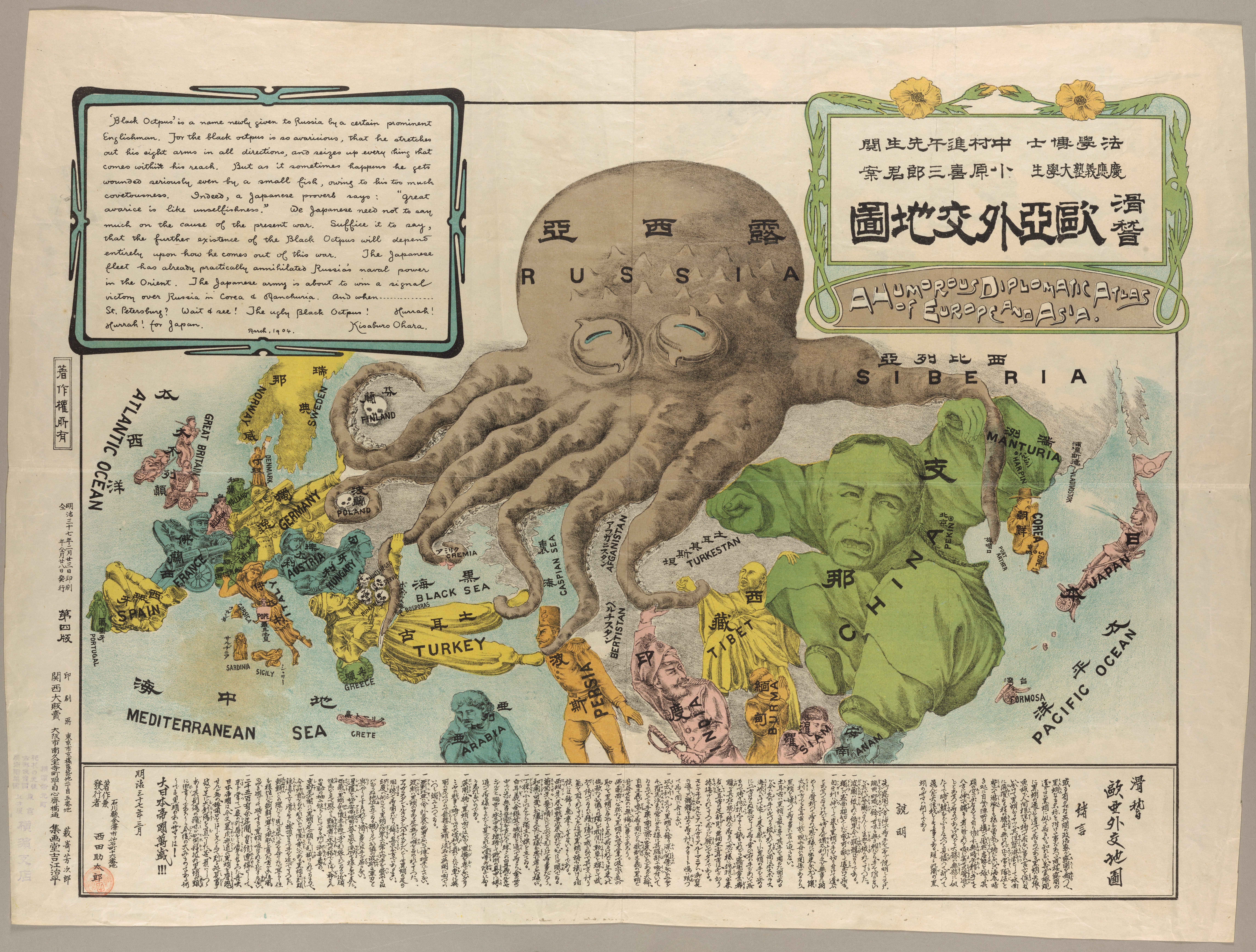
A satirical map of Europe and Asia in 1904. [Photo: PJ Mode Collection at Cornell’s Digital Library/CC BY-SA 3.0]
Perhaps one of the most popular uses of the image of the octopus is to illustrate expansionistic Russia, writes University of Helsinki geography professor Katariina Kosonen in the journal National Identities.
Fred W. Rose’s 1877 Serio-Comic War Map of Russia as a monstrous, smoky grey octopus inspired Japanese illustrator Kisaburō Ohara to show the country’s overbearing reach during the Russo-Japanese War. In his 1904 map, created when he was a still a student at Keio University, Ohara’s pudgy octopus twists its arms around different countries represented by comic caricatures either trying to fight off Russia’s reach to no avail or observing complacently. The octopus’s eight arms extend to Finland all the way to Korea.
On the map, Ohara wrote: “For the black octopus is so avaricious, that he stretches out his eight arms in all directions, and seizes up every thing that comes within his reach.”
The map’s legend and text is in English, as Ohara intended it to be a message for the British. The document was created right after Japan successfully conducted a surprise attack against the Russian fleet anchored at Port Arthur, Manchuria—this marked a turning point in a heavy naval-powered war. Ohara’s map urged Britain, a dominant naval force, to maintain its neutrality and keep its fleet out of the conflict. He was adamant that Japan could fend for itself as the scripture in the upper-left corner says:
“The Japanese fleet has already practically annihilated Russia’s naval powers in the Orient. The Japanese army is about to win a signal victory over Russia in Corea and Manchuria. And when … St. Petersburg? Wait & see! The ugly Black Octopus! Hurrah! Hurrah! for Japan.”
The Indies Must Be Free! Work and Fight For It!
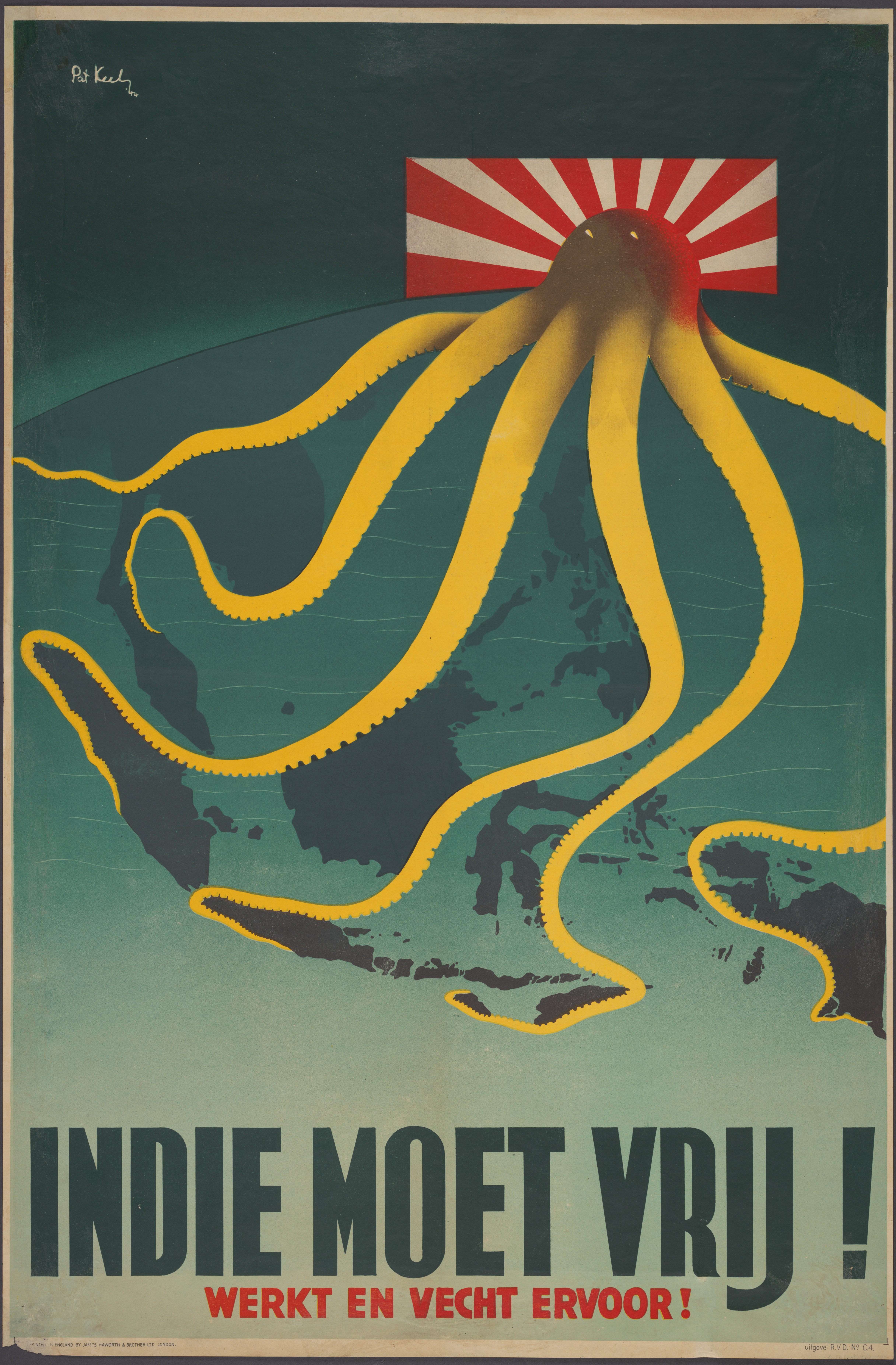
Indie Moet Vrij! Werkt en Vecht Ervoor! [Photo: PJ Mode Collection at Cornell’s Digital Library/CC BY-SA 3.0]
This 1944 propaganda poster by Patrick Cokayne Keely, a British graphic artist known for his World War II posters, features a darkened, yellow octopus crowned with the red rays of Japan’s flag. Six arms extend out and their suckers latch on to the Dutch East Indies (present-day Indonesia), signifying Japan’s control during World War II. The map was published by the Dutch government-in-exile in London to show Japan’s campaign and occupation of the Dutch East Indies in a negative light. Keely’s use of bold, contrasting colors emphasizes the message.
War is the National Industry of Prussia

La Guerre est l’Industrie Nationale de la Prusse [Photo: PJ Mode Collection at Cornell’s Digital Library/CC BY-SA 3.0]
Illustrator and poster designer Maurice Neumont created this World War I satirical, political map in 1917. Serving as a French propaganda poster, this map portrays Prussia as a green octopus that curls its arms around different countries across Europe. The sea creature also wears a “pickelhaube,” the common spiked helmet worn by German soldiers during the 19th and 20th centuries.
In the right corner, three soldiers signify historical periods of Prussia’s military. The first two soldiers represent Prussia’s militia in a comical light, Neumont mocking the strength of Prussian soldiers in 1715 and 1815. The third largest soldier holds a bloodied bayonet, his uniform smeared with fingerprints made in blood. This figure “symbolizes the greatly increased, existential threat to French survival,” writes map journalist for Big Think, Frank Jacobs. “Message to the war-weary French populace: kill or be killed.”
Neumont made the map for “La Conference au Village contre la Propaganda en France” to help boost patriotism and morale in provincial France. At the bottom of the map is a quote from French General Phillipe Pétain: “Under attack, we are merely defending ourselves in the name of Liberty and to preserve our lives.”
The Red Octopus
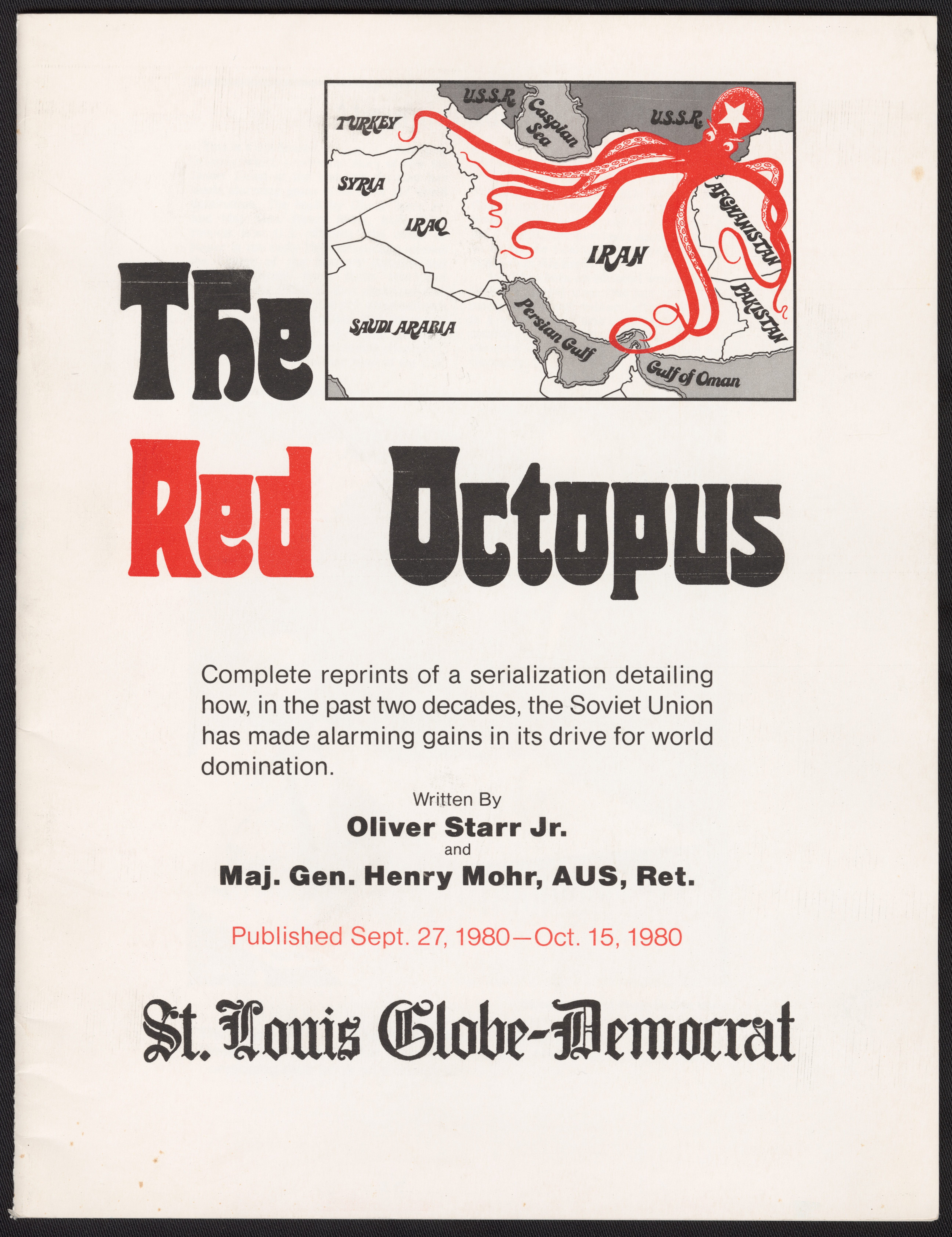
Communism’s progression shown as an octopus. [Photo: PJ Mode Collection at Cornell’s Digital Library/CC BY-SA 3.0]
Here, a ferocious bright red octopus emblazoned with a white star represents the Soviet Union on the cover of a 1980 pamphlet. The map shows the spread of Communism into Turkey, Iran, Afghanistan, and Pakistan—the U.S.S.R octopus’s arms spindling down. Henry Mohr and Oliver Starr created the pamphlet to warn how quickly the Soviet Union’s control had gained momentum over the preceding two decades.
Map Monday highlights interesting and unusual cartographic pursuits from around the world and through time. Read more Map Monday posts.










Follow us on Twitter to get the latest on the world's hidden wonders.
Like us on Facebook to get the latest on the world's hidden wonders.
Follow us on Twitter Like us on Facebook